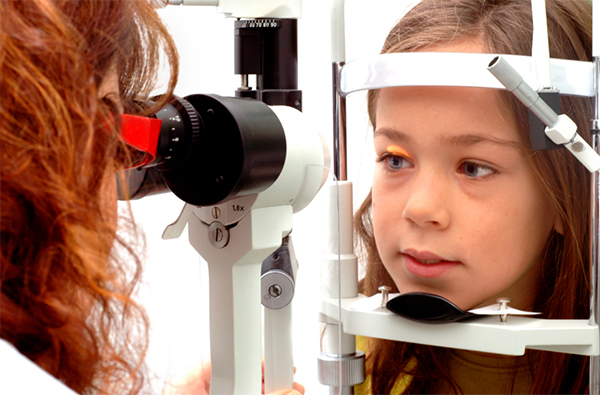Depending on your child’s age and stage in development, he or she may not be able to identify or communicate about vision problems, or know the difference between good and poor eyesight. As a parent, you can be alert to any abnormalities within or around the eye. You can also watch your child’s reactions to certain things like light or reading, which could be essential in catching a problem with vision or another medical condition early.
5 common vision disorders
Here are five common childhood vision disorders and symptoms to watch for at home:
Lazy eye (amblyopia): With amblyopia, one eye typically focuses better than the other eye. The weaker (or lazy) eye may appear to wander when it is not focused on the point of sight. While lazy eye typically affects one eye, in some cases, both eyes may be affected. With early treatment, proper vision can be restored to the lazy eye(s).
Crossed eyes (strabismus): One or both of a child’s eyes may turn inward, outward, up or down. Crossed eyes left untreated can lead to lazy eye, so it is important to seek medical care upon noticing these symptoms.
Blocked tear duct: Signs of a blocked tear duct include watery eyes and/or swelling or inflammation around the eye. A blocked tear duct is most common during infancy, but can occur anytime in life due to traumatic injuries or more serious medical conditions.
Pinkeye (conjunctivitis): Pinkeye isa highly contagious and common infection in children. Symptoms include redness or swelling of the eye or inside eyelids; itchy, burning eyes; crusting of the eyelids or lashes; and white, green or yellow eye discharge. Pinkeye is usually mild and gets better even without treatment. However, your child’s doctor may prescribe an antibiotic for bacterial pinkeye (not caused by a virus).
Blurred vision (refractive errors): Refractive errors, including nearsightedness and farsightedness, can be treated by wearing glasses or contacts. Children of all ages even babies can wear glasses. But how do you know if your child needs vision correction? Depending on the age, a child’s symptoms may vary. Watch for the following milestones related to vision:
- During the infant stage, a child should be able to track an object back and forth and up and down. If this milestone isn’t met by three months it may be a sign of a vision disorder that may be corrected with glasses or another treatment.
- By preschool, a child should be able to identify many shapes, objects and colors. If a child struggles with this task, an eye exam can help determine if the cause is related to vision.
- In school-age and older children, be on the lookout for signs of vision trouble including headaches, squinting and difficulty reading. Children with poor vision may hold books near or far away from their faces or complain to you or the teacher if they are unable to see what is on the chalkboard. All of these signs indicate that a child should have a vision exam.
Ask about eye problems
The key with children’s vision disorders is to pay attention on their behalf. What they don’t know, they can’t express, so always ask when in doubt. Call your child’s health care provider or ophthalmologist if you have questions about your child’s vision.





good, here gives you about children vision disorder tips. lets share about this post. very useful to all.